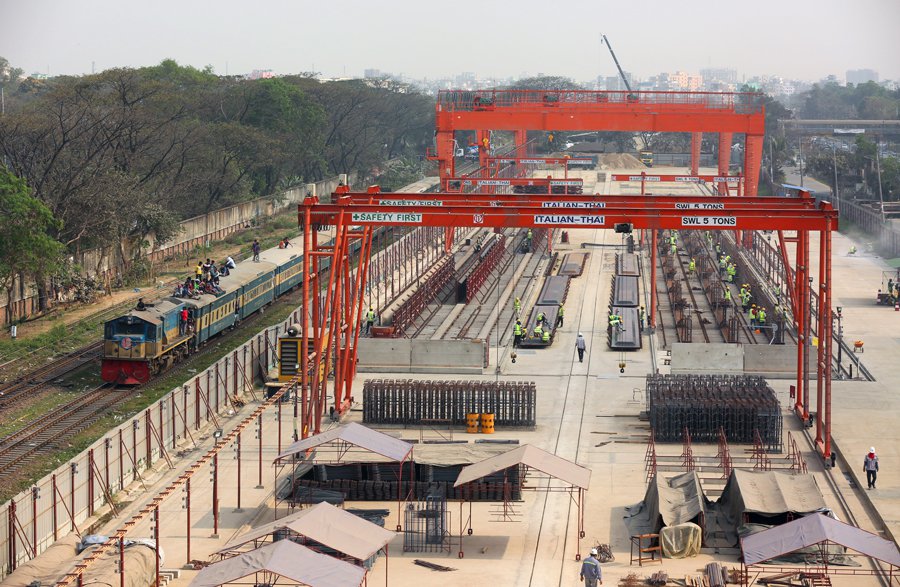Bangladesh’s Development Surprise: A Model for Developing Countries
By many metrics, Bangladesh’s development trajectory is a unique success story, especially since the 1990s when democratic rule was reinstated and extensive economic reforms were made. Poverty incidence has fallen from 60 percent to around 30 percent. Gender parity has been achieved in primary and secondary school enrollment.
The total fertility rate has fallen from 3.4 to 2.3 (slightly above the “replacement level”), infant and maternal mortality rates have fallen by at least half since 1990, and life expectancy has risen by 10 years to 69 (four years more than in India in 2012). Bangladesh is one of the few developing countries that is on target for achieving most of the Millennium Development Goals, and is considerably ahead of target on some indicators.

These are among the fastest improvements in basic living condition ever seen in history, and they took many observers by surprise because Bangladesh’s achievements so far do not exactly fit into the typical pathways of human and social development. The Indian economist Amartya Sen, for example, distinguishes between “income-mediated” and “support-led pathways” to human development. The first is characterized by improvements in social indicators that can be traced back to rapid- and broad-based economic growth (exemplified by Korea), while the second is based on high public spending on welfare programs (as in Sri Lanka’s case). Neither is clearly applicable to Bangladesh. The economic growth rate rose significantly after 1990, but it only reached 6 percent in 2004, and has never exceeded 7 percent. Furthermore, spending on education and healthcare (2.2% and 3.5%, respectively, of GDP in 2012) is below the average for low-income countries.
Thus, although the improvement in Bangladesh’s growth rate since 1990 is impressive, it does not fully explain the country’s extraordinary results with regard to social development. Several other countries in South and Southeast Asia have grown at similar or higher rates than Bangladesh in the last 10 to 15 years, including India, Bhutan, Vietnam, Cambodia, and Laos. Yet, in comparison to these countries, Bangladesh’s social development still stands out.
Development experts have explained this discrepancy by attributing Bangladesh’s social development to the success of innovative, low-cost solutions such as microfinance programs that target women, massive social mobilization campaigns spearheaded by NGOs like BRAC, the success of the labor-intensive, export-based garments industry, and the boost to earnings and human capital provided by labor migration and inward remittances.
Reductions in Poverty and Inequality
Alongside the progress in education, health, and gender equity, Bangladesh is also in the midst of a growth takeoff that has reduced poverty and doubled per capita income (measured at purchasing power parity) since 2002. The Bangladesh government deserves praise for putting in place the essential preconditions that have allowed private sector dynamism to fuel economic growth over the last two decades. Structural reforms in the 1980s and 1990s led to broad macroeconomic stability and low fiscal deficits. This allowed the banking system to cater primarily to private investment needs and caused a significant rise in the investment-to-GDP ratio (currently at 27% of GDP). Successive governments have also had considerable success at keeping inflation at a moderate level. Bangladesh has not managed to attract high levels of foreign direct investment (FDI), but the strong performance of remittance inflows has taken on the role of FDI in bolstering the foreign exchange account and smoothing out fluctuations in GDP due to varying domestic economic conditions.
One step ahead
This comment has received a 0.33 % upvote from @booster thanks to: @rubaet.